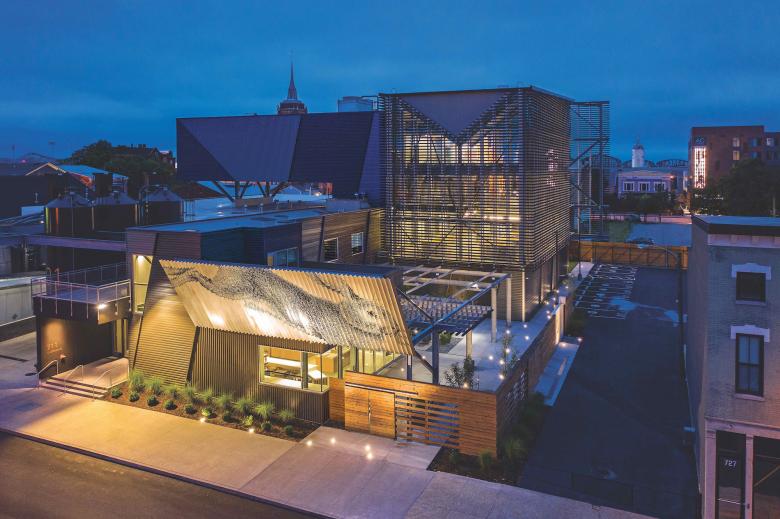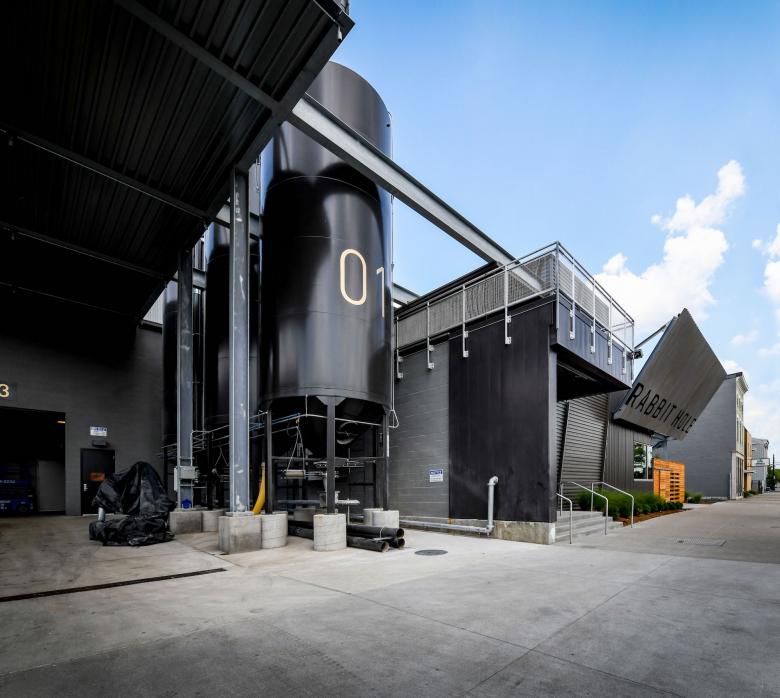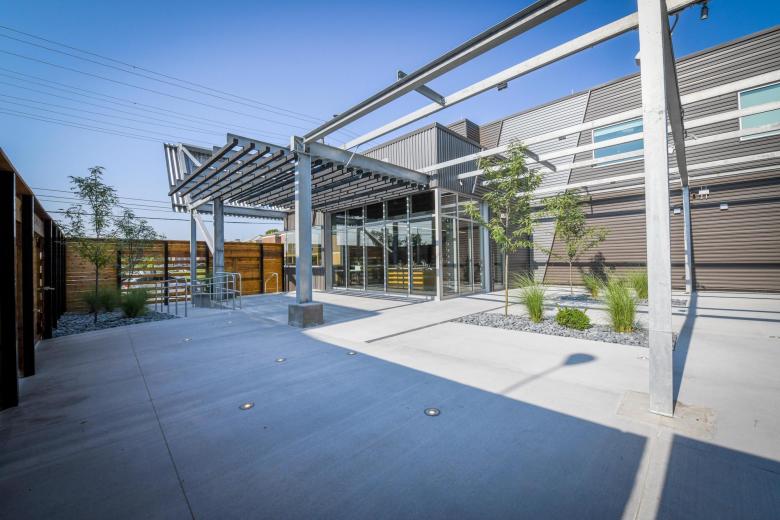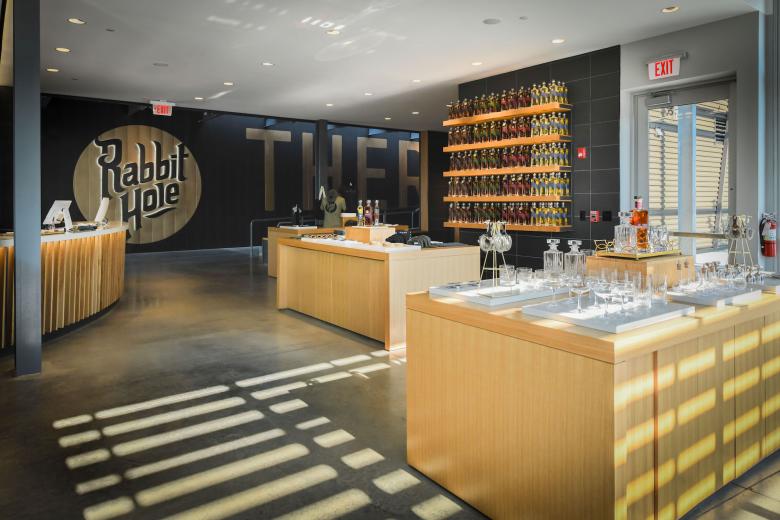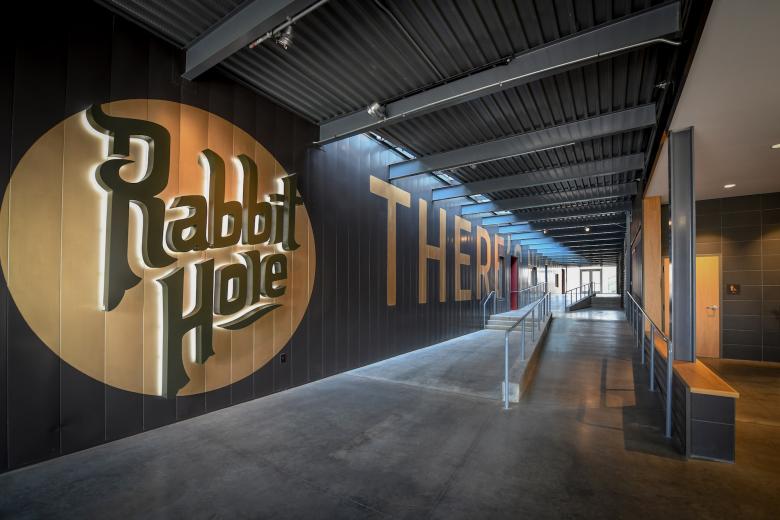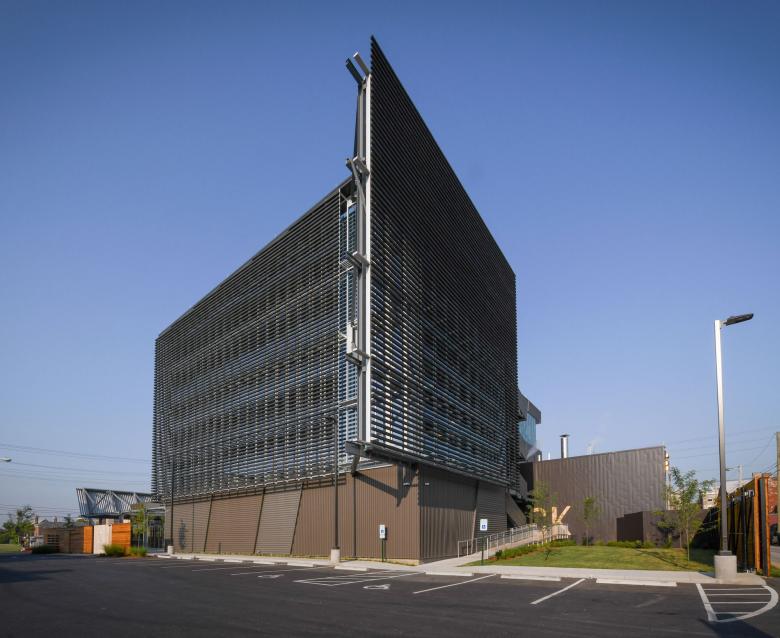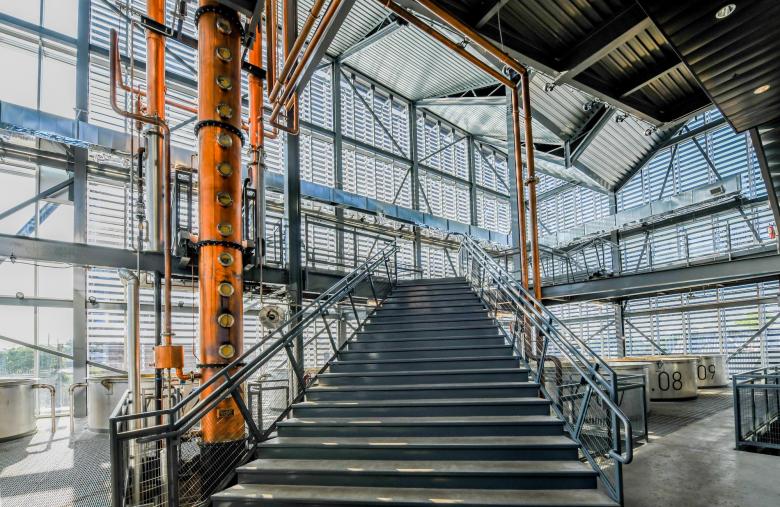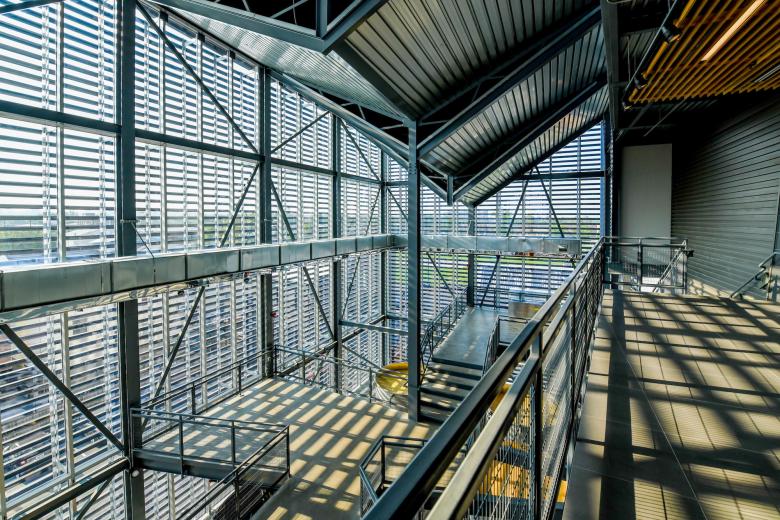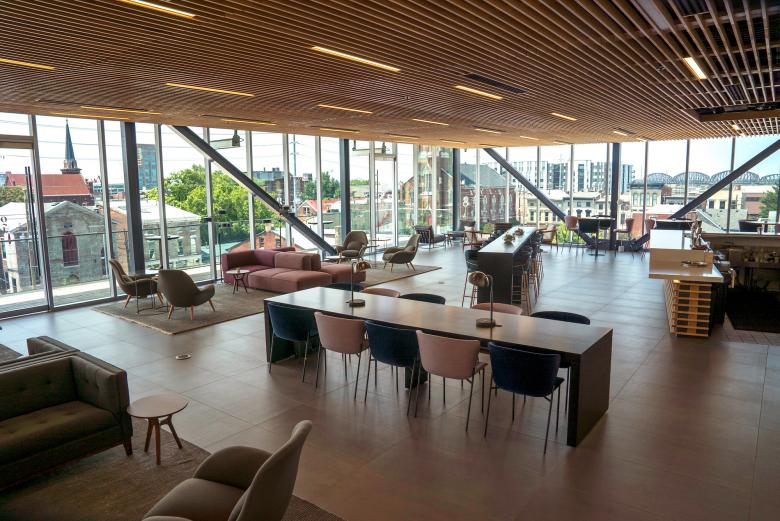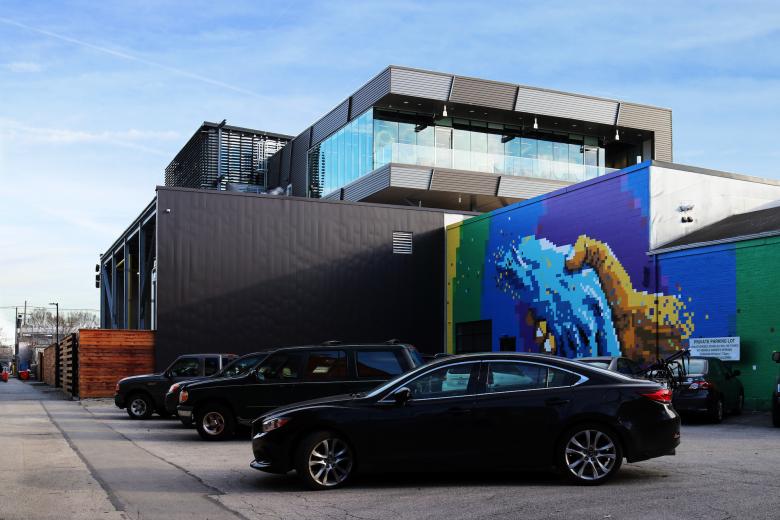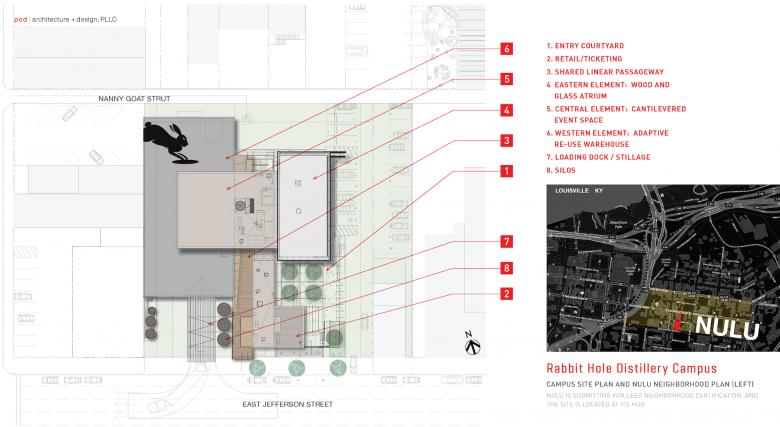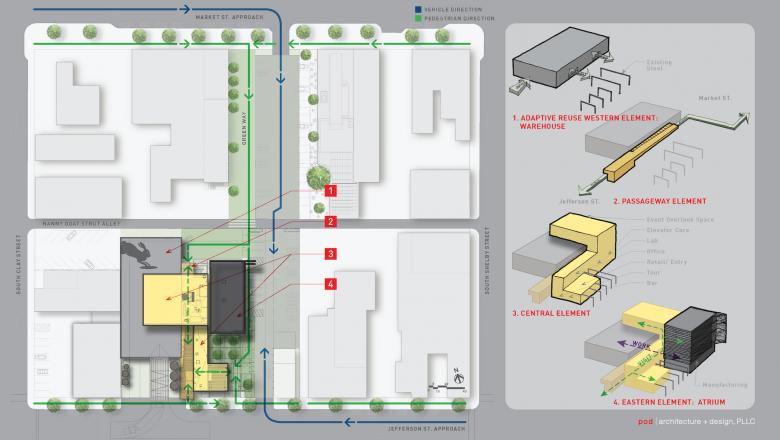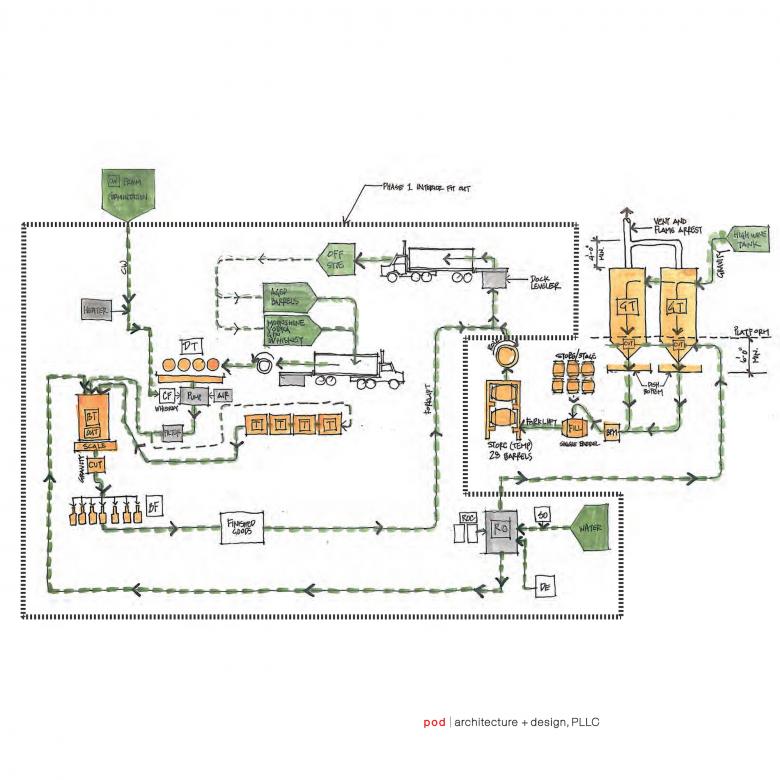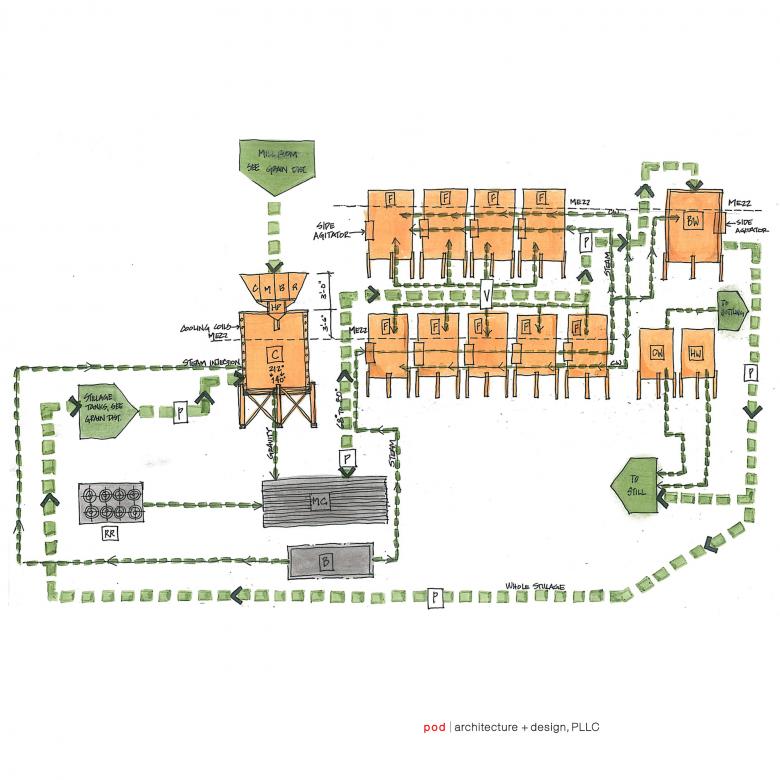US Building of the Week
Rabbit Hole Distillery
pod architecture + design
15. maart 2021
Photo: Rabbit Hole Distillery
Made up of new construction and the adaptive reuse of an old warehouse and church building, the Rabbit Hole Distillery in Louisville, Kentucky's East Market District (aka Nulu) is truly a campus, with retail, dining, office and event spaces, in addition to those for manufacturing bourbon, rye, and other spirits. The architects at North Carolina's pod architecture + design answered a few questions about the project.
Location: Louisville, Kentucky, USA
Client: Kaveh Zamanian
Architect: pod architecture + design, PLLC
- Design Principals: Doug Pierson, AIA, and Youn Choi
- Project Architects: Justin Williams
- Project Manager: Doug Pierson, AIA
- Project Team: Barbora Ngaboyamahina, Dougald Fountain
MEP/FP Engineer: Luckett & Farley
Landscape Architect: pod architecture + design, PLLC
Lighting Designer: pod architecture + design, PLLC
Interior Designer: pod architecture + design, PLLC
General Contractor: Prodigy Construction
Owner Construction Manager: Two Tons Construction
Process Engineer: Vitok Engineering
Glazing: Efco Glazing
Glazing Contractor: WR Cole & Associates Inc.
Metal Installers: Dunn Construction
Steel Framing: Sentry Steel
Building Area: 55,000 sf
Photo: Cindy Barclay, courtesy of pod architecture + design, Rabbit Hole Distillery, and Prodigy Construction
What were the circumstances of receiving the commission for this project?Doug Pierson was architect for the next door neighbor, The Green Building, Downtown Louisville’s first LEED Platinum building in 2007. When Doug heard about a possible distillery at the abandoned Disney Tire Building in 2015, he reached out to Kaveh Zamanian, built a physical design model, and flew to Kentucky within a week to present his concept. The rest is history.
Rabbit Hole is a 55,000-square-foot, $15 million modern, sustainably designed bourbon distillery occupying an entire city block in the heart of Downtown Louisville, Kentucky.
Photo: Cindy Barclay, courtesy of pod architecture + design, Rabbit Hole Distillery, and Prodigy Construction
What are the main ideas and inspirations influencing the design of the project?Aesthetically, Rabbit Hole’s owner wanted his new distillery to be decidedly modern and as craft-conscious and transparent as the creation of his Kentucky Straight Bourbon. He wanted it to be an open, inviting addition to the Nulu streetscape — to stand out without standing apart, to promote excitement and pride in the local bourbon industry.
The physical process of making bourbon and the owner’s desire for transparency provided innovative solutions, informing every facet of the design. Embracing a “form follows process” strategy, the building took shape in response to the sequential steps of bourbon production. The open floor plan allows visitors to view and follow the process as it unfolds, treats the copper and steel equipment as utilitarian art, and maintains a view of the gleaming, 48-foot-tall copper still from every angle within the manufacturing atrium.
Photo: Cindy Barclay, courtesy of pod architecture + design, Rabbit Hole Distillery, and Prodigy Construction
An ordered arrangement of architectural elements weaves visitors and staff through a procession of manufacturing and public spaces in a manner that reveals urban bourbon making in a modern way:
- Western Element: The repurposed manufacturing warehouse shell remains in its original location and is reinforced to support the new central element that floats above.
- Passageway Element: The linear pedestrian element forms an interior axis for merging both factory workers and visitors into a shared space experience. Inspired by historic narrow pedestrian passages distinctive to the neighborhood, the Passageway element creates an indoor boulevard linking the two main neighborhood streets: Jefferson St to the south, and Market St to the north.
- Central Element: Clad in a custom metal skin with diagonal batons, this element folds from ground to sky between “bookends” (warehouse, atrium), organizing a clear ‘non-factory’ like places for events, offices, labs and retail.
- Eastern Atrium Element: The transparent Manufacturing Atrium, with floating walkways and expansive views, houses the distillery’s tanks and still. The vertical column still sets this element’s height and invites visitors to immerse themselves above and around the manufacturing experience while not interfering with the process.
Intertwined uses emerge from the ordered elements. Workers cross east-west from the “bookends” while visitors move North-South through destination points in the Passageway, Central and Eastern Elements as the climb toward the raised event space, all the while immersed in the grain to glass experience.
Photo: Cindy Barclay, courtesy of pod architecture + design, Rabbit Hole Distillery, and Prodigy Construction
How does the design respond to the unique qualities of the existing building?The project also repurposed two old, existing buildings: a former tire warehouse and a ca. 1930 church building. The warehouse became back-of-house operations and retail space. Metal removed from the warehouse was repurposed into an overhead trellis at the main entrance. The church building’s 8,000 square feet became offices, storage, and shipping-and-receiving spaces.
Photo: Cindy Barclay, courtesy of pod architecture + design, Rabbit Hole Distillery, and Prodigy Construction
How did the project change between the initial design stage and its completion?From the original concept to the final structure, Rabbit Hole Distillery evolved from a 24,000- square-foot structure to an entire campus comprised of the 55,000-square-foot building that includes manufacturing, retail and tour spaces, the Overlook events space, two bars, the lofty Manufacturing Atrium and executive offices; the adaptively re-used church building; a 3,000-square-foot “Little Green Building,” a Nulu landmark; and a 5,000-square-foot restaurant.
Photo: Cindy Barclay, courtesy of pod architecture + design, Rabbit Hole Distillery, and Prodigy Construction
Was the project influenced by any trends in energy-conservation, construction, or design?Although the Rabbit Hole Distillery is not LEED certified, it encompasses many features of sustainable design and construction:
- Adaptive reuse/repurposing (as previously noted).
- Maintain 30% of existing building structures, slab and roof. Maintain overall existing building footprint to reduce disturbance and lower carbon footprint.
- Local sourcing (materials, suppliers, and contractors) to reduce the building’s carbon footprint.
- Dual-purpose chillers and hot water tanks for both bourbon production and building use — potentially a first in a distillery.
- Production design efficiency: Most of the processing occurs as gravity flow, which means fewer pumps are needed and less energy is consumed.
- Big Ass Fans® in warehouses and back-of-house spaces instead of high-energy mechanical systems.
- Tiered comfort zone designs to ensure minimal energy use in a maximal energy use industry.
- Fermented grain (stillage) as a bio-source of heat for cooker equipment (which also adds complexity and depth to the bourbon taste).
- Exterior wood louvers to eliminate heat gain before it gets trapped in the building.
- Thermal mass concrete floors.
Photo: Cindy Barclay, courtesy of pod architecture + design, Rabbit Hole Distillery, and Prodigy Construction
What products or materials have contributed to the success of the completed project?Metal was critical to the design process as an expressive wall material. Through collaboration with a metal manufacturer, the architects developed details for the exterior skin to feature a concealed fastener and a fin at each joint, allowing pattern rotation and color changes in the same skin system. The angle of the label on the Rabbit Hole bottle inspired the joint angle. The result is an innovative system of parts that turned a standard metal wall material into a formalized metal skin system adapted specifically for this project.
The distillery is comprised of over 13,500 square feet of new concealed fastened wall panels along with flush panels in five standard colors. Applications include exterior vertical and horizontal wall panels and breezeway flush-ceiling panels. A wide outdoor staircase is clad in perforated metal.
Metal also factored into the solution for another challenge: heat reduction in the manufacturing atrium. There and along the passageway through the building, exposed metal decks are an architectural finish for the ceilings. In the atrium, these high metal decks cascade over angled bays to form an open tapestry, allowing for rapid exhaust and air exchange in the humid space. Huge industrial fans contribute to lowering the temperature.
Email interview conducted by John Hill.
